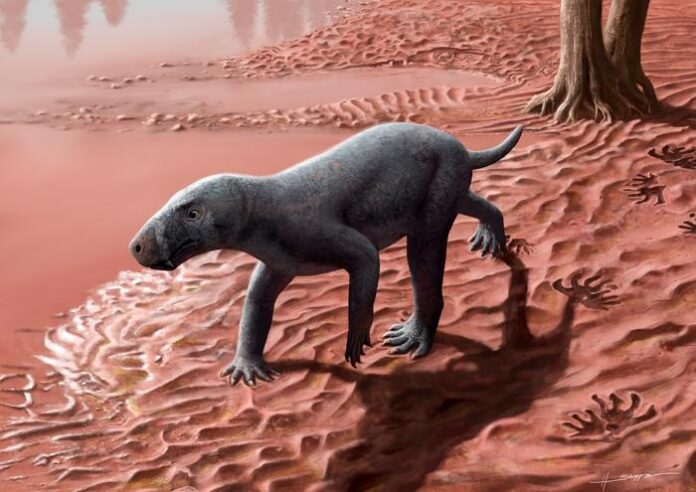The oldest known saber-toothed predator, dating back over 270 million years ago, appears to have been an animal caught in the evolutionary middle, according to a report in Nature Communications.
The gorgonopsian excavated in Mallorca laid eggs, unlike most mammals. But it was warm-blooded, unlike reptiles. Its leg shape and position were halfway between mammal and reptile. And its saber teeth were more commonly associated with mammals like Smilodon, which emerged in North America about 2.5 million years ago. It looked sort of like a 3-foot-long dog — but without ears or fur.
Discover the Gorgonopsian
Gorgonopsians lived between 270 million years and 250 million years ago and are classified as synapsids, which are a group of animals that have both reptilian and mammalian qualities. Scientists believe mammals emerged from their lineage about 200 million years ago.
This particular gorgonopsian is unusual for a few other reasons as well. No other members of this species have been found in the relatively low latitudes of what is now Europe. All other fossils were excavated closer to the poles — either Russia or South Africa.
Then there’s the question of age. “It is probably the oldest gorgonopsian on the planet,” Josep Fortuny, an author of the article and researcher at the Institut Català de Paleontologia (ICP) in Barcelona, said in a press release. “The one we found in Mallorca is at least 270 million years old, and the other records of this group worldwide are, at the very least, slightly younger.”
Read More: Fossils Show Us What a Pig From the Dinosaur Era Might Have Looked Like
Small, but a Top Predator
Even though the Mallorca gorgonopsian was, at three feet, relatively small, its speed and saber teeth made it a top predator.
“We know that this is a carnivorous animal, a characteristic shared by all gorgonopsians worldwide,” Àngel Galobart, an ICP researcher said in a press release. “The saber teeth are a common feature in large predators of ecosystems, and what we have found was likely one in the environment in which it lived.”
The Mallorca of the Permian Period, when this gorgonopsian lived, was different than the island off the coast of Spain that is now known as a prime vacation spot. First, it wasn’t an island, but rather, a piece of the supercontinent Pangaea. It sat at an equatorial latitude, positioned relative to the equator where Congo or Guinea can now be found today. The monsoonal climate ranges between very wet and very dry periods.
The site where the gorgonopsian was found was likely a floodplain with temporary ponds from which gorgonopsians and other animals drank. An ancient group of herbivorous reptiles was probably among them — and they likely become prey to the gorgonopsians.
Read More: The Late Permian Mass Extinction Explained
Article Sources
Our writers at Discovermagazine.com use peer-reviewed studies and high-quality sources for our articles, and our editors review for scientific accuracy and editorial standards. Review the sources used below for this article:
Before joining Discover Magazine, Paul Smaglik spent over 20 years as a science journalist, specializing in U.S. life science policy and global scientific career issues. He began his career in newspapers, but switched to scientific magazines. His work has appeared in publications including Science News, Science, Nature, and Scientific American.
Source : Discovermagazine















